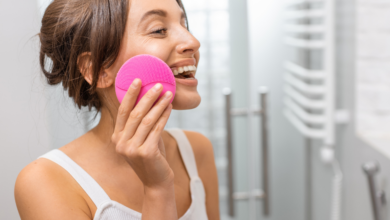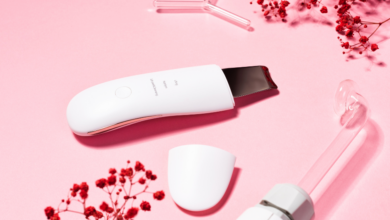
If you’ve ever struggled with oily skin, you know just how frustrating it can be to deal with constant shine, breakouts, and feeling like your makeup never stays in place. But fear not, because Stylish is here to help! Our comprehensive guide is packed with tips, tricks, and expert advice to help you navigate the challenges of oily skin. Whether you’re looking for skincare recommendations, makeup tips, or advice on controlling excess oil, we’ve got you covered. Say goodbye to that unwanted shine and hello to a fresh, matte complexion that you’ll love.

Understanding Oily Skin
Causes of Oily Skin
Oily skin is often caused by genetics, hormonal changes, or an overproduction of sebum, the natural oil produced by the skin. Hormonal changes, such as during puberty or pregnancy, can lead to an increase in sebum production, resulting in oily skin. Additionally, certain environmental factors, such as humidity or excessive heat, can exacerbate oil production. Stress, an unhealthy diet, and certain medications can also contribute to oily skin.
Characteristics of Oily Skin
If you have oily skin, you may notice certain characteristics that are unique to this skin type. Oily skin tends to have a shiny or greasy appearance, especially around the T-zone (forehead, nose, and chin). You may also experience enlarged pores, which can easily become clogged. Oily skin is prone to acne and blackheads, as the excess sebum can trap dirt and bacteria in the pores. Despite these challenges, oily skin is also more resilient and less prone to wrinkles.
Common Myths about Oily Skin
There are several myths surrounding oily skin that can lead to misconceptions about how to manage it effectively. One common myth is that oily skin does not need moisturizer, as it already produces enough oil. However, skipping moisturizer can actually worsen oily skin by causing it to overcompensate and produce even more oil. Another myth is that overwashing the face will help control oiliness. In reality, overwashing can strip the skin of its natural oils and cause it to produce more sebum, leading to oilier skin. It is important to debunk these myths and understand the proper ways to care for oily skin.
Identifying Acne Types
Overview of Acne
Acne is a common skin condition that occurs when hair follicles become clogged with oil, dead skin cells, and bacteria. It can manifest in various forms, such as whiteheads, blackheads, papules, pustules, nodules, or cysts. Acne is not limited to oily skin; it can affect individuals with any skin type. Proper identification of acne types is crucial for determining the most appropriate treatment methods.
Different Types of Acne
Whiteheads and blackheads are considered non-inflammatory acne, while papules, pustules, nodules, and cysts are inflammatory acne. Whiteheads are closed comedones, which appear as small white or flesh-colored bumps on the skin. Blackheads, on the other hand, are open comedones, characterized by dark pores caused by the oxidation of trapped sebum. Papules are small red, tender bumps, while pustules are red bumps with a white or yellow center. Nodules and cysts are more severe forms of acne that manifest as deep, painful lumps under the skin.
Identifying Acne Triggers
Identifying acne triggers can help prevent breakouts and manage oily skin effectively. Common triggers include hormonal fluctuations, certain medications, stress, environmental factors (e.g., humidity), and dietary choices. Keeping a skincare diary can be a helpful tool in identifying if certain foods, products, or activities worsen acne. By pinpointing triggers, you can make informed lifestyle changes and tailor your skincare routine accordingly.
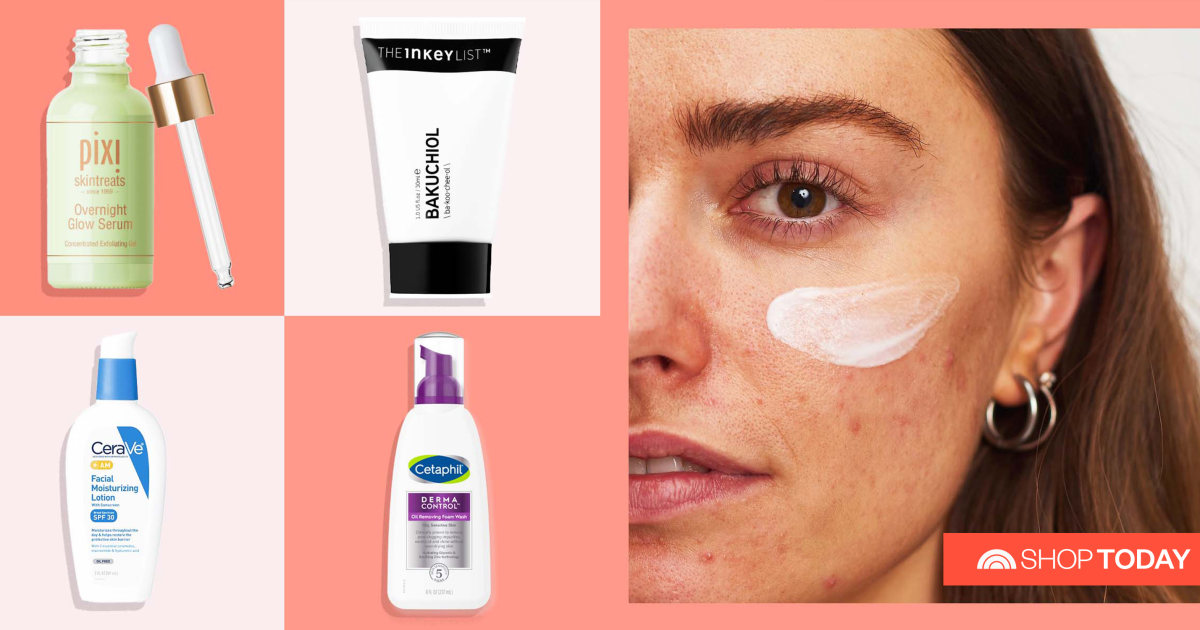
Skincare Routine for Oily Skin
Cleansing and Exfoliating
Proper cleansing is the foundation of any skincare routine for oily skin. It is recommended to cleanse your face twice a day, using a gentle cleanser specifically formulated for oily or acne-prone skin. Avoid using harsh scrubs or abrasive cleansing tools, as they can irritate the skin and stimulate excess oil production. Exfoliating regularly, with a gentle exfoliant, can help remove dead skin cells and unclog pores, preventing acne breakouts.
Choosing the Right Moisturizer
Contrary to popular belief, moisturizing is crucial for oily skin. Look for oil-free, non-comedogenic moisturizers that provide lightweight hydration without clogging the pores. Ingredients like hyaluronic acid or glycerin can help replenish moisture without adding extra oil to the skin. Applying moisturizer after cleansing and exfoliating will help balance the skin’s hydration levels and prevent it from overproducing oil.
Importance of Sunscreen
Wearing sunscreen is essential for everyone, regardless of skin type. Oily skin can still benefit from sunscreen, as it protects the skin from harmful UV rays and prevents signs of premature aging. Choose a lightweight, oil-free sunscreen with at least SPF 30 and apply it daily, even on cloudy days. Sunscreens with ingredients like zinc oxide or titanium dioxide can also help control oil and mattify the skin.
Using Effective Treatments and Serums
Incorporating targeted treatments and serums into your skincare routine can help manage oily skin and prevent acne breakouts. Look for products that contain acne-fighting ingredients like salicylic acid or benzoyl peroxide. These ingredients can penetrate the pores, unclog them, and reduce inflammation. Serums containing ingredients like niacinamide or tea tree oil can also help regulate sebum production and improve the overall appearance of oily skin.
Managing Oily Skin with Makeup
If you choose to wear makeup, opt for oil-free, non-comedogenic products specifically formulated for oily or acne-prone skin. Avoid heavy foundations or products with a dewy finish, as they can exacerbate oiliness and clog the pores. Instead, choose lightweight, matte foundations or mineral-based powders. Use oil-absorbing sheets throughout the day to control shine without disrupting your makeup. Always cleanse your face thoroughly at the end of the day to remove makeup and unclog pores.
Diet and Lifestyle Changes
Impact of Diet on Oily Skin
While diet alone may not directly cause oily skin, certain foods can contribute to increased sebum production or inflammation, leading to more acne breakouts. High-glycemic foods, such as white bread, sugary snacks, or processed foods, can cause fluctuations in blood sugar levels and trigger oil production. Dairy products and foods high in saturated fats can also aggravate acne. It is important to maintain a balanced diet and minimize the consumption of these acne-triggering foods.
Foods to Avoid
To manage oily skin and prevent acne breakouts, it is best to avoid or reduce the intake of certain foods. These include sugary snacks, processed foods, refined carbohydrates, deep-fried foods, and dairy products. These foods can contribute to inflammation and sebum production, worsening oily skin and increasing the likelihood of acne breakouts. Opt for a diet rich in fruits, vegetables, whole grains, lean proteins, and healthy fats instead.
Beneficial Foods for Oily Skin
Certain foods can have a positive impact on oily skin and promote a healthy complexion. Foods rich in antioxidants, such as berries, leafy greens, and dark chocolate, can help reduce inflammation and protect the skin against free radicals. Omega-3 fatty acids found in fish, nuts, and seeds can also help regulate oil production and maintain skin health. Additionally, foods containing probiotics, like yogurt or kimchi, can promote a healthy gut and improve the overall condition of the skin.
The Role of Hydration
Hydration plays a crucial role in maintaining healthy skin, including oily skin. Drinking an adequate amount of water throughout the day helps flush out toxins and hydrate the skin from within. Proper hydration can also prevent the skin from producing excess oil to compensate for dehydration. Aim to drink at least 8 glasses of water per day and ensure that your skin stays hydrated and balanced.
The Importance of Exercise
Regular exercise not only benefits overall health but also promotes healthy skin. Exercise improves blood circulation, which helps deliver oxygen and nutrients to the skin cells. Sweating during exercise can also help unclog pores and eliminate toxins from the skin. Incorporate moderate exercise into your routine, such as brisk walking, jogging, or yoga, to support healthy skin and manage oily skin concerns.
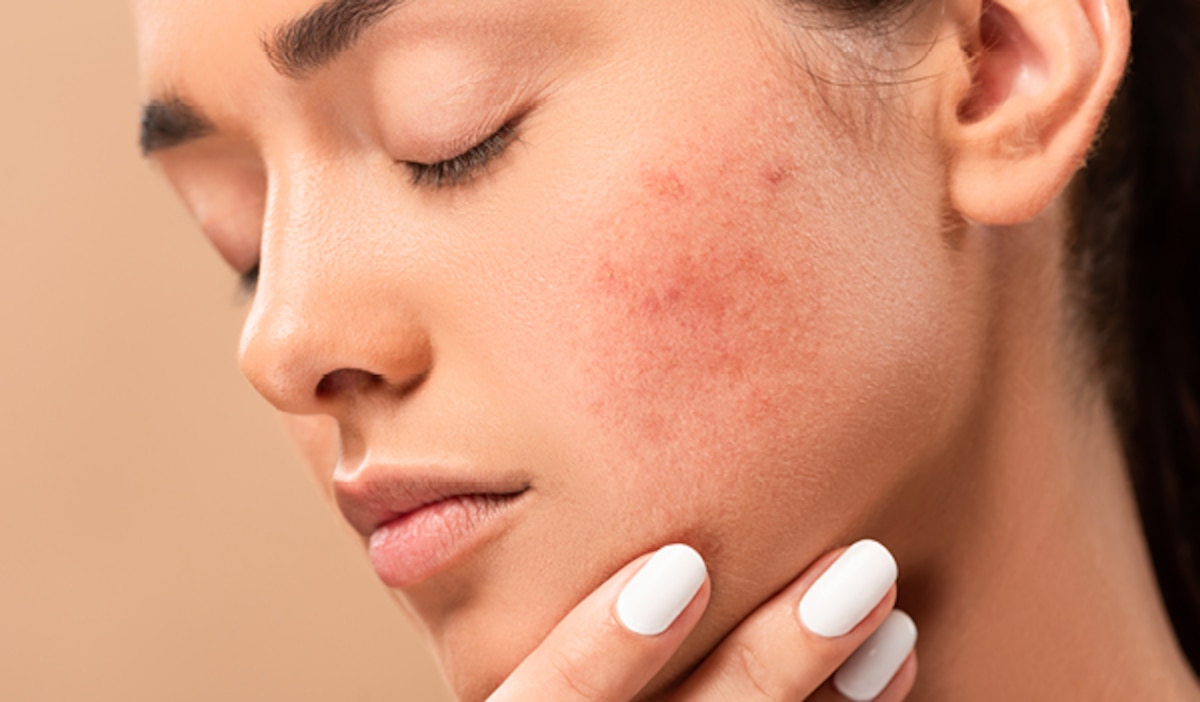
Natural Remedies for Oily Skin
Tea Tree Oil
Tea tree oil has antimicrobial and anti-inflammatory properties, making it a popular natural remedy for oily skin and acne. It can help reduce excess oil production, unclog pores, and calm inflammation. However, tea tree oil should always be diluted before applying it to the skin to avoid irritation. Mix a few drops of tea tree oil with a carrier oil, such as jojoba oil or coconut oil, and apply it to the affected areas with a cotton pad or swab.
Apple Cider Vinegar
Apple cider vinegar is known for its astringent properties, making it an effective natural remedy for oily skin. It can help balance the skin’s pH levels, reduce oiliness, and unclog pores. However, it is essential to dilute apple cider vinegar before use, as its acidity can cause skin irritation. Mix equal parts of apple cider vinegar and water, and apply it to the face using a cotton pad. Leave it on for a few minutes, then rinse off with water.
Clay Masks
Clay masks are excellent for absorbing excess oil, unclogging pores, and removing impurities from the skin. Look for clay masks specifically formulated for oily or acne-prone skin, such as bentonite clay or kaolin clay masks. Apply the mask to clean, dry skin, and leave it on for the recommended time. Rinse it off with warm water and follow up with a moisturizer. Clay masks can be used once or twice a week for best results.
Honey and Lemon
A combination of honey and lemon can help control oiliness, soothe inflammation, and brighten the skin. Honey has natural antibacterial properties, while lemon acts as an astringent. Mix equal parts honey and freshly squeezed lemon juice, and apply it to the face. Leave it on for 10-15 minutes, then rinse off with lukewarm water. This natural remedy can be used once a week to manage oily skin and minimize breakouts.
Witch Hazel
Witch hazel is a natural astringent that can help reduce oiliness, tighten the pores, and soothe inflammation. It contains tannins, which have antibacterial properties and can help remove excess oil from the skin. Apply witch hazel to a cotton pad and gently swipe it over the face after cleansing. It can be used twice a day as part of your skincare routine to manage oily skin effectively.
Professional Treatments for Oily Skin
Chemical Peels
Chemical peels are dermatological procedures that use a chemical solution to exfoliate the skin and remove dead skin cells, excess oil, and impurities. They can help improve the appearance of oily skin, reduce acne breakouts, and promote a smoother complexion. Chemical peels should be performed by a licensed professional, as they require expertise and careful application to avoid complications. Regular sessions may be necessary to achieve optimal results.
Microdermabrasion
Microdermabrasion is a non-invasive procedure that exfoliates the skin using a special tool or machine. It helps remove dead skin cells, unclog pores, and brighten the complexion. Microdermabrasion can be beneficial for oily skin by reducing oiliness and promoting a more balanced skin texture. Regular sessions are recommended to maintain the results and manage oily skin concerns effectively.
Laser Treatments
Laser treatments for oily skin are designed to target excess oil production and stimulate collagen production in the skin. They can help reduce sebum production, minimize the appearance of enlarged pores, and improve overall skin texture and tone. Laser treatments are performed by trained professionals and may require multiple sessions for optimal results. It is important to consult with a dermatologist to determine the most suitable laser treatment for your specific skin concerns.
Oil-Control Facials
Oil-control facials are specifically tailored to target oily skin and address its unique challenges. These facials typically involve deep cleansing, exfoliation, pore extraction, and the application of oil-controlling products. The specific techniques and products used may vary depending on the aesthetician or spa offering the treatment. Regular oil-control facials can help manage oiliness, prevent acne breakouts, and promote a clearer complexion.
Prescription Medications
In severe cases of oily skin or acne, prescription medications may be necessary to effectively manage the condition. These medications are typically prescribed by a dermatologist and may include topical treatments, oral medications, or a combination of both. Topical medications, such as retinoids or antibiotics, can help unclog pores, reduce inflammation, and control oil production. Oral medications, like oral contraceptives or isotretinoin, may be prescribed for hormonal acne or severe cases of oily skin.
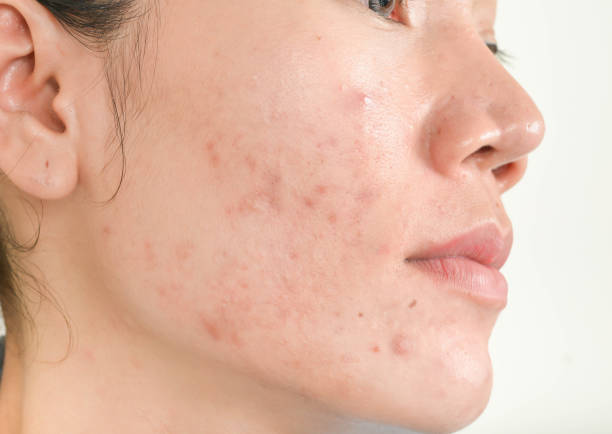
Preventing Acne Scars
Proper Acne Treatment
Properly treating acne is crucial to prevent the development of acne scars. Avoid picking or popping pimples, as this can lead to infection and scarring. Instead, use gentle, non-comedogenic products to cleanse, exfoliate, and treat acne. Incorporate acne-fighting ingredients, such as salicylic acid or benzoyl peroxide, into your skincare routine. It is also advisable to consult with a dermatologist for personalized acne treatment recommendations.
Avoiding Picking or Popping
Resist the urge to pick or pop pimples, as this can cause further inflammation and potentially lead to scarring. Picking at acne lesions can introduce bacteria into the skin, delaying the healing process and increasing the risk of scarring. Instead, allow acne to heal naturally or seek professional assistance from a dermatologist or aesthetician for safe extraction when necessary.
Using Scar-Reducing Products
If acne scars do develop, there are various scar-reducing products available that can help improve their appearance. Look for products containing ingredients like vitamin C, retinol, or niacinamide, which can promote collagen production and fade scars over time. These products should be used consistently and as directed to achieve noticeable results.
Seeking Professional Help
For more stubborn or severe acne scars, professional treatments such as laser resurfacing, micro-needling, or chemical peels may be necessary. These treatments are performed by trained professionals and aim to improve the texture and appearance of acne scars. It is important to consult with a dermatologist or skin specialist to determine the most suitable treatment option for your specific needs.
Protecting the Skin from Sun Damage
Sun protection is essential when preventing and minimizing the appearance of acne scars. UV radiation can darken and worsen the appearance of scars, making them more difficult to fade over time. Apply a broad-spectrum sunscreen with at least SPF 30 daily, even during cloudy days or when indoors. Wearing protective clothing, such as hats and sunglasses, and seeking shade when the sun is strongest can further protect the skin from sun damage and the potential worsening of acne scars.
Managing Hormonal Imbalances
Understanding Hormonal Imbalances
Hormonal imbalances can contribute to oily skin and acne breakouts, especially in women. Fluctuations in hormone levels, particularly during puberty, menstruation, pregnancy, or menopause, can increase sebum production and lead to hormonal acne. Understanding the role of hormones in oily skin can help in managing its effects and seeking appropriate treatment.
Impact on Oily Skin
Hormonal imbalances can cause the sebaceous glands to produce more sebum, resulting in oily skin. This excess oil can clog the pores, leading to acne breakouts. Hormones such as testosterone and progesterone can also stimulate the production of skin cells and contribute to the development of acne. Identifying the role of hormones in oily skin can help target treatment methods that address the underlying hormonal imbalance.
Balancing Hormones
Balancing hormones is a complex process that may require medical intervention. Hormonal imbalances can be managed through lifestyle changes, specifically in diet and exercise. Reducing stress levels, managing weight, and getting sufficient sleep can also help regulate hormone levels. In some cases, hormonal oral contraceptives or other medications may be prescribed to help balance hormone levels and manage oily skin.
Seeking Medical Advice
If you suspect that hormonal imbalances are contributing to your oily skin, it is important to seek medical advice. A dermatologist or endocrinologist can evaluate your symptoms, perform necessary tests, and recommend appropriate treatments. They may suggest specific hormonal medications or interventions tailored to your individual needs, alongside lifestyle modifications to manage hormonal imbalances effectively.
Lifestyle Changes for Hormonal Balance
In addition to seeking medical advice, certain lifestyle changes can contribute to the balance of hormones and overall skin health. Incorporating regular exercise into your routine can help regulate hormone levels and reduce stress. Maintaining a balanced and nutrient-rich diet, while avoiding hormone-disrupting foods, can also support hormonal balance. Making conscious efforts to manage stress levels and prioritize quality sleep can further contribute to healthier hormone levels and overall skin well-being.
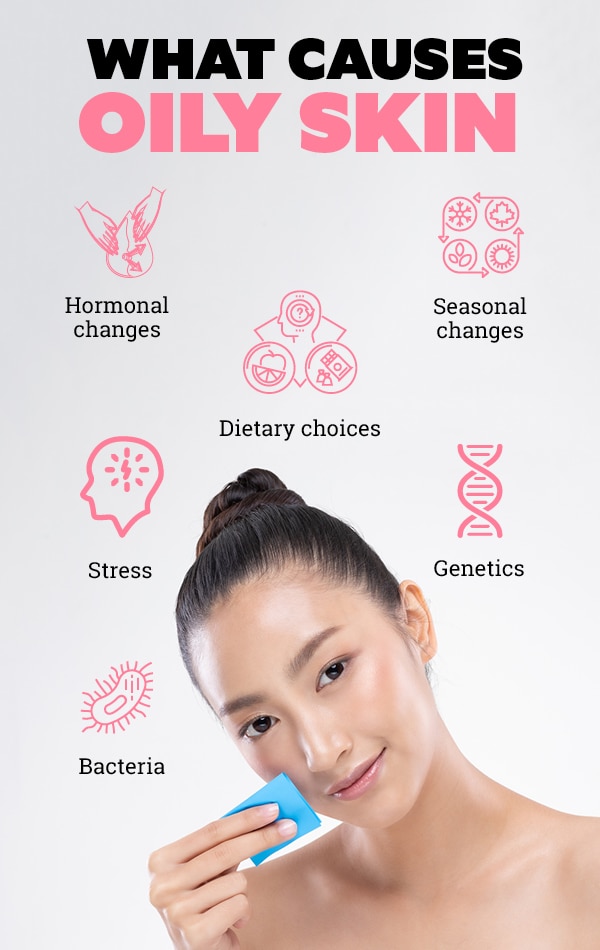
Daily Habits for Healthy Skin
Keeping the Skin Clean
Keeping the skin clean is essential for maintaining healthy skin, particularly for individuals with oily skin. Wash your face twice a day using a gentle cleanser specifically formulated for oily or acne-prone skin. Avoid using harsh scrubs or abrasive cleansing tools, as they can irritate the skin and stimulate excess oil production. Use lukewarm water and pat the skin dry gently with a clean towel.
Avoiding Touching the Face
Try to avoid touching your face throughout the day, as this can transfer dirt, bacteria, or oil from your hands to your face, potentially causing breakouts. Resting your chin or cheeks on your hands can also lead to the spread of bacteria and increased oil production. Be mindful of this habit and make a conscious effort to keep your hands away from your face.
Changing Pillowcases Regularly
Changing your pillowcases regularly can help prevent the buildup of dirt, oil, and bacteria that can transfer to your face while you sleep. Pillowcases can accumulate sweat, oil, and hair products, which can be transferred to your skin as you sleep. Aim to change your pillowcases at least once a week to maintain cleanliness and minimize the risk of breakouts.
Managing Stress Levels
Stress can contribute to hormonal imbalances and exacerbate oily skin and acne breakouts. Practice stress-management techniques such as meditation, deep breathing, or engaging in activities that you enjoy. Taking time for self-care and relaxation can have a positive impact on your overall well-being and the health of your skin.
Getting Sufficient Sleep
Sufficient sleep is crucial for skin health and overall well-being. Lack of sleep can increase stress levels, compromise the immune system, and contribute to a dull complexion and increased oiliness. Aim for 7-9 hours of quality sleep each night to allow your body and skin to regenerate and repair.
Conclusion
Understanding and managing oily skin can be a journey, but it is important to remember that there is no one-size-fits-all solution. By identifying the causes and characteristics of oily skin, adopting a suitable skincare routine, making dietary and lifestyle changes, and seeking professional help when necessary, you can navigate the challenges of oily skin and achieve a happy, healthy complexion. Commit to a comprehensive approach that prioritizes proper cleansing, hydration, and protection, and you’ll be well on your way to managing oily skin successfully.
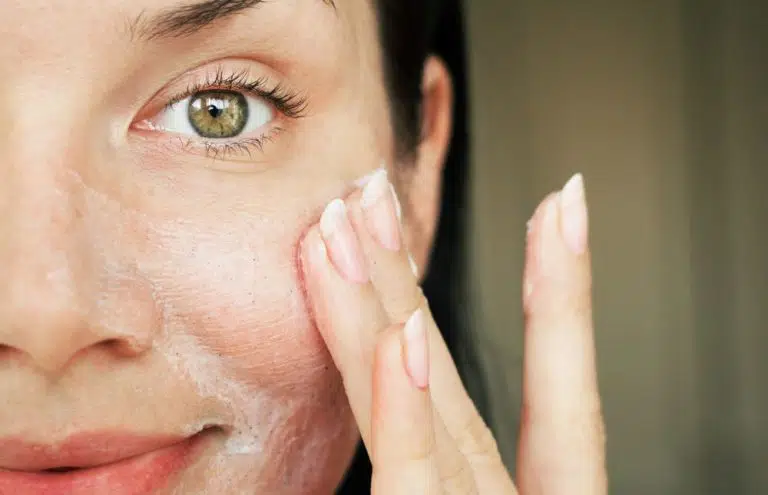
Hair Food Shampoo + Conditioner Review(Opens in a new browser tab)
Hair Food Sulfate Free Purifying Shampoo and Conditioner Review(Opens in a new browser tab)
Pantene Pro-V Hair Super Food 3 Minute Miracle Conditioner, 200ml Review(Opens in a new browser tab)

